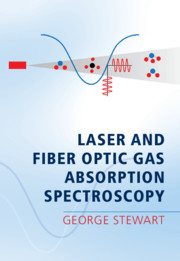Dye molecular aggregation and other interactions on clay mineral surfaces cause phenomena such as methachromasy (change in color), fluorescence enhancement, or quenching, which represent significant changes in the spectral properties of the dye. These phenomena can be used to control the photophysical properties of hybrid systems based on cationic organic dyes. In the present study, the aggregation of two structurally similar cyanine dyes, 3,3’-diethyl-oxocyanine iodide (OxCy) and 3,3’-diethyl-2,2’-thiacyanine iodide (ThCy), in colloidal dispersions of three smectites (saponite, hectorite, and montmorillonite) was studied by absorption and fluorescence spectroscopy for a broad range of dye/smectite loadings. Spectral data were analysed by chemometric methods (principal component analysis, PCA, and multivariate curve resolution, MCR). Detailed analysis of the OxCy absorption spectra by the chemometric methods revealed the formation of two types of oblique aggregates exhibiting light absorption in both H- and J-bands. The existence of such similar aggregates, with similar splitting of excitation energies, appears to be related to the existence of two stable conformational isomers of this dye. On increasing the smectite CEC and dye/smectite loading, fluorescence quenching occurred. The ThCy dye exhibited a stronger tendency for molecular aggregation than OxCy. On increasing the smectite CEC, the formation of oblique aggregates with dominant H-bands also increased. On aging of the hybrid dispersions, equilibria of ThCy aggregates were shifted to the species with dominant J-bands. This behavior had a significant impact on the shape and intensity of the fluorescence emission of the hybrid dispersions. Using different smectites enables control of the dye aggregation and significant change to the photophysical properties of the hybrid systems. These systems can be used for the detailed study of the photophysical properties of cyanine dyes in various states. The colloidal systems with cyanine dyes can be used as precursors for the preparation of novel hybrid materials. In addition, the sensitive response of the photophysical properties of cyanine dyes to the clay mineral surface can be applied to the characterization of clay minerals.


